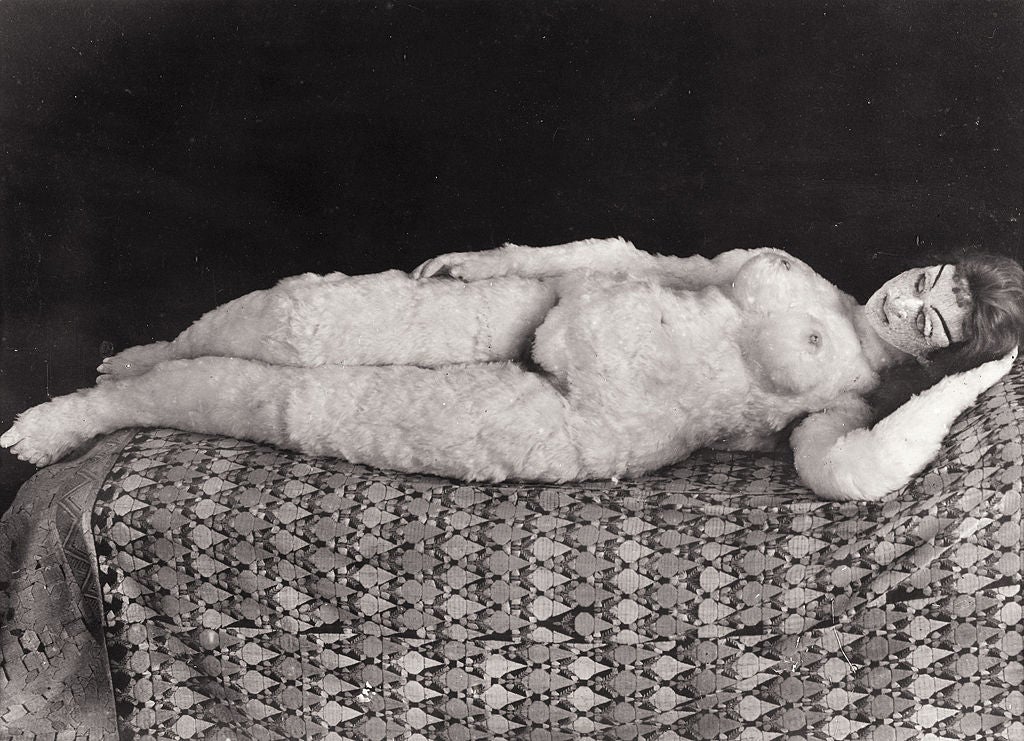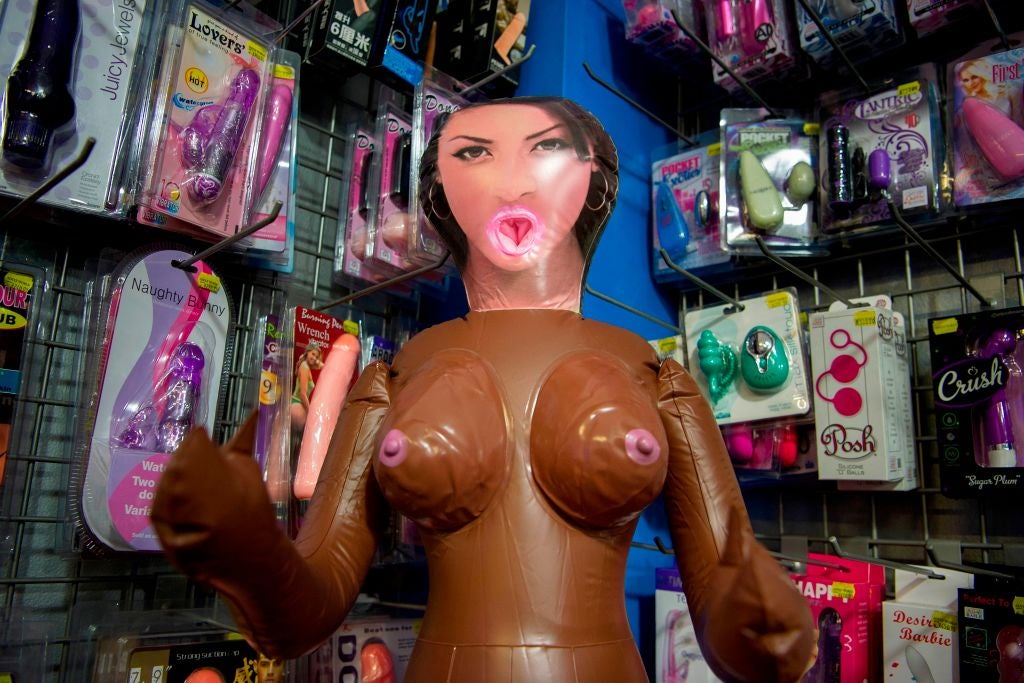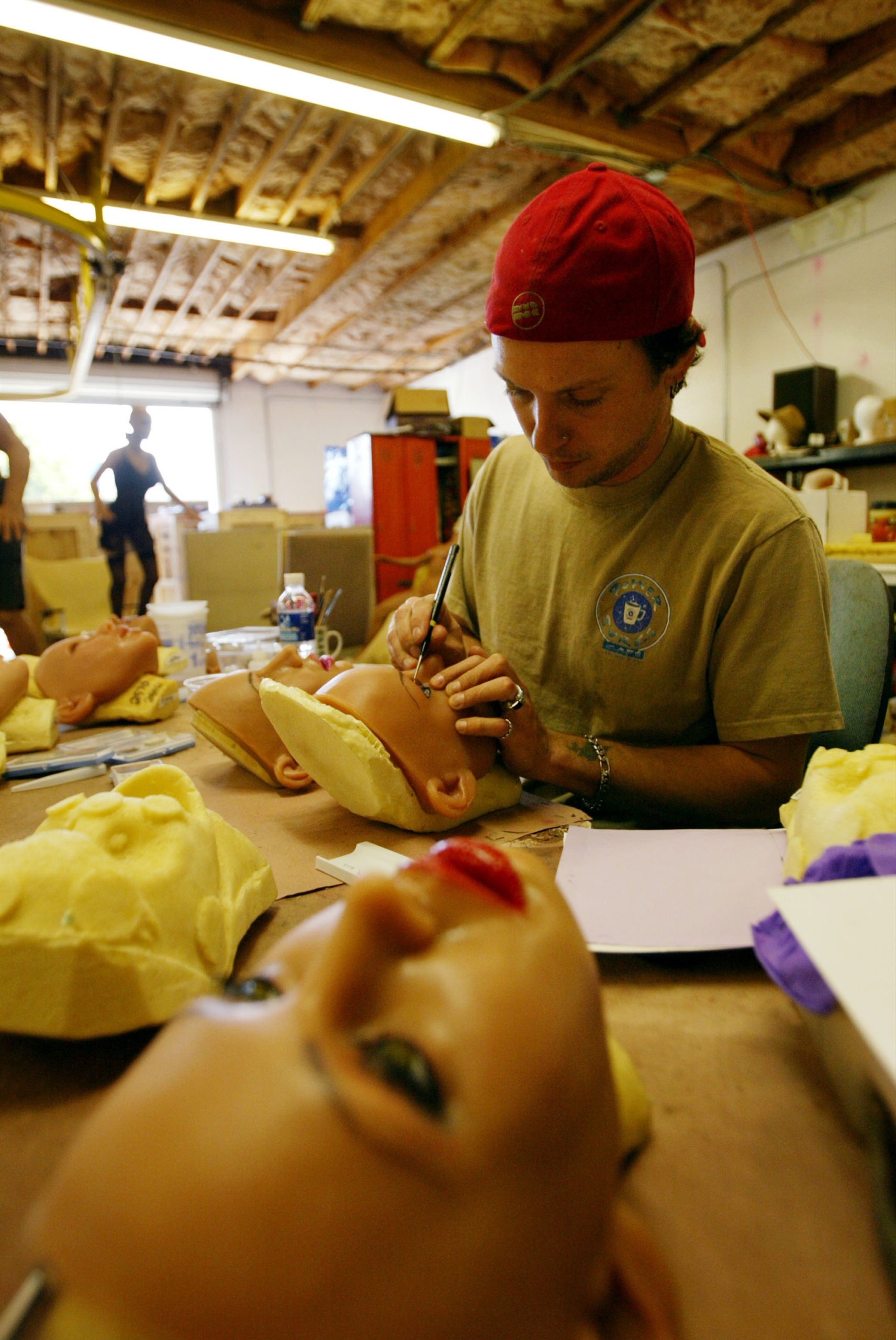When it comes to masturbatory innovation, sailors have it down. Long voyages at sea on all-dude ships lead to a lot of time spent, uh, shivering one’s timber. To mix things up a bit — or perhaps bring the illusion of romance into lonely nights below deck — sailors in the 17th century would occasionally make fake women out of cloth. These mildly scarecrow-esque figures were known as dames de voyage to French sailors and damas de viaje to the Spanish. Dutch sailors took leather ones with them to Japan for trading, and the name “Dutch wives” is still used in Japan today for modern, high-tech sex dolls.
But in the early 20th century, one man took the idea to a fairly haunting extreme. In 1916, Austro-Hungarian artist Oskar Kokoschka had a figure made of his ex-lover, Alma Mahler. “I wanted to own a life-size replica of Alma,” he later wrote. “I sought out the best female artisan I could find, I saw to it that she was provided with all Alma’s photographs and measurements so that she could create the doll I had in mind. In order to dress it with an equal elegance to Alma’s, I bought dresses and lingerie from the best Parisian houses. [When it arrived], I was enraptured! It was just as beautiful as Alma, even though its breasts and hips were stuffed with sawdust.”
However, Kokoschka later tired of it, claiming the doll had “cured him of his passion,” and drunkenly beheaded it at a party.

Meanwhile, in France, mannequins became an object of interest for a lot of artists in the early 20th century. In his book The Erotic Doll: A Modern Fetish, Marquand Smith recounts how, in 1938, a group of Surrealists including Man Ray took it upon themselves to “violate” a collection of mannequins. Ray wrote that they behaved “each in his own original and inimitable manner but without any consideration whatsoever for the feelings of the victims who nevertheless submitted with charming goodwill to the homage and outrage that was inflicted on them.”
World War II both led to improved inflatable technology — of which more later — and bored, horny Nazis. While the story of the Borghild Project isn’t true, and is a hoax started after the war, it gets repeated a lot and has shown up in books treated as being totally accurate. According to the tale, Hitler was concerned about an outbreak of syphilis among Parisian sex workers, worried his soldiers stationed there would all end up ill. In a bid to keep them otherwise occupied, he arranged for the development of sex dolls, with realistic-feeling flesh and humanlike flexibility, yet also able to fit in a backpack. However, before the dolls were shipped out to the horny soldiers, the scheme was cancelled and the factory destroyed in the Dresden bombings. Again, didn’t happen.
What is true is that, as plastic technologies improved and the inflatable market took off, blow-up dolls were invented. While they became novelty items, used as comedy props and gag gifts, ubiquitous enough that jokes could be made about “going home to inflate your girlfriend,” plenty of people tried them out as well. One responder on an r/AskReddit thread about the experience writes, “Downsides are that they rarely last more than a few uses because they are cheaply constructed and have a propensity to blow out leaks. Also they must be cleaned after ejaculating into them or it gets a nasty smell after a day or two.”
The inflatable dolls are still around today — in 2011, an Australian couple had to be rescued after using one to float down a river, leading to the police clarifying that they were “not recognized flotation devices.” Seven years later, a dashcam captured footage of a man using one on the hard shoulder of Britain’s longest motorway, the M1. For her part, Dutch artist Sandra Reijgers turns inflatable dolls into hoodies and jackets. And during the pandemic, the producers of The Bold and the Beautiful ended up using inflatable dolls for over-the-shoulder shots as a social-distancing measure.

In 1994, however, work began on a project that would transform the world of masturbation puppets. The RealDoll, the creation of Matt McMullen, is a life-size figure with silicone flesh over a PVC skeleton, available with customizable features. McMullen insists it started as an art project — he was allegedly trying to make the most realistic mannequin ever — but as soon as he posted pictures online, people got in touch asking to fuck them. The first RealDoll went on sale in 1997, and there are now dozens of rival companies making similar models.
A lot of the people who are into them are very, very into them, claiming to have emotional connections and genuine romantic feelings toward them. One of the most famous devotees is a man known as Davecat, who has been featured in countless documentaries and lives with four dolls, all of whom have Twitter accounts. When he dies, he wants his ashes placed inside the skull of the one he calls his wife, which will then be placed in a glass case dressed in a Japanese mourning kimono.
A British couple owns over 240 high-end dolls, but they insist they just like hanging out with them. “I’ve never made love or had sex with the doll at all,” says the man. “That’s not what I do.” A pansexual Kazakh bodybuilder claims to have married his RealDoll, later breaking it and entering into a relationship with a custom-made humanoid chicken doll with a vagina for a navel. People like him — i.e., those who consider themselves to be in relationships with dolls — are called iDollators. According to Davecat, a popular phrase used among the community is “Losers whine about not having a girlfriend. Winners go home and fuck a doll.”
As for technological innovation, there are now interactive models that speak, a typical statement being: “My primary objective is to be a good companion to you, to be a good partner and give you pleasure and wellbeing. Above all else, I want to become the girl you have always dreamed about.” For those less fussed about an emotional connection or their partners having heads or faces, RealDoll also offers torso-only products, and an even more portable groin-with-stumps model.
Per The Erotic Doll, the patent for the synthetic vagina calls it a “device for discreet sperm collection.” In terms of more overt misogyny, the patent for one particular “female functioning mannequin” cites as the reasons for its invention the “fact” that women are “cruel, venal and superficial,” that “they humiliate and break the hearts of men” and that dolls on the contrary are “reliable, compliant, companionable and loving.”

Which, of course, begs a very obvious question: Do you have to hate women to be into sex dolls? While it’s not 100 percent necessary — a recent paper in the Journal of Medical Ethics concluded that they were “a reasonable way to support later-life sexuality for persons with disabilities” — it definitely seems like it helps.
The MGTOW community — short for “Men Going Their Own Way,” a collection of heterosexual men who have sworn off any sort of romantic or emotional involvement with women — is very into the idea. “The doll will never get old and saggy,” writes one MGTOW. “She’ll never bitch about you to her friends. She’ll never trick you into having kids or go psycho on you.” The appeal for these men seems to be that all the parts of a woman they value — breasts, a vagina, an anus — are present, without any of the inconvenient things like a personality, individual agency, wants or needs.
It should go without saying, but suggesting an inanimate object is equal to or better than a human being requires holding those humans in extraordinarily low regard. “The idea that people are objects and exist for others to buy, sell and use is harmful,” Megan Murphy, editor of the Feminist Current, previously told MEL. “It leads to violence against women, obviously, because if you don’t view a woman as a person with feelings, interests and desires of their own, it makes it much easier to hurt them with impunity.”
The dolls are certainly hurt with impunity. The Kazakh bodybuilder/iDollator says he “loves to dominate,” and that his doll “is capable of what other people are not capable of,” a fairly sinister-sounding statement. Along those lines, half the stories on the aforementioned blow-up doll r/AskReddit thread end with someone breaking their doll due to treating it too violently, or in one case getting angry and stabbing it. And again, Kokoschka had his doll made out of what he claimed was love, only to cut off its head.
It’s all fairly unsettling, and likely to get worse as A.I. improves. Sales surged in quarantine, and the more realistic these things look and sound, the more people can forget they’re exactly that — things. It doesn’t say a lot for anyone if the two most attractive traits they want in a partner are 100-percent compliance and a dishwasher-safe vagina.
It makes the idea of a lonely 17th-century sailor jizzing into a smelly scarecrow seem positively charming.

